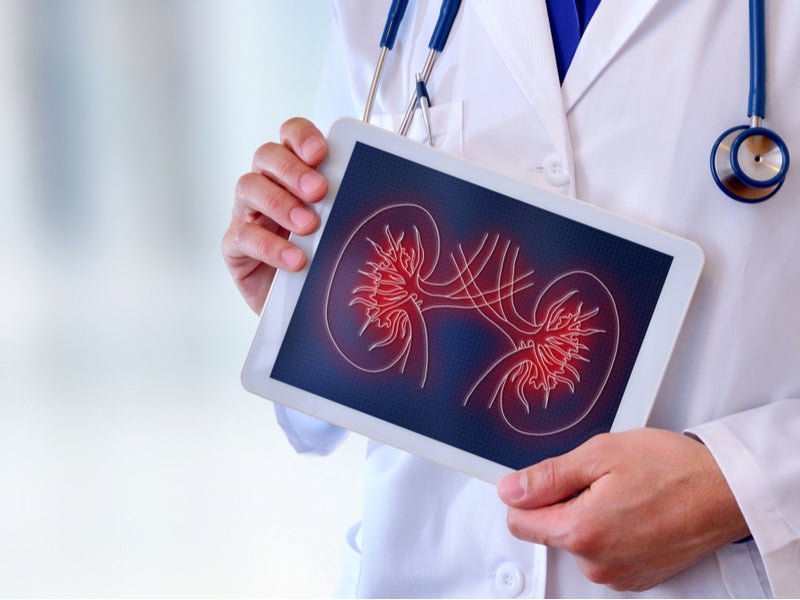
Six to eight glasses of water a day. That’s what we’ve been told in the UK is the amount of fluid to aim for to ensure our bodies stay sufficiently hydrated. But avoiding dehydration depends on more than just what you’re drinking — you have to consider the impact of the medications you’re taking too.
Over a billion people worldwide have high blood pressure, or hypertension. Many of those are prescribed water tablets or ‘diuretics’ to bring their numbers back to a healthier range — between 120/80 and 140/90. This type of medication works on the kidney by increasing the amount of salt and water that comes out in your urine.
But in a recent study, researchers at the University of Waterloo in Canada found that people who take a combination of drugs (including a diuretic) to reduce their blood pressure need to be extra careful about their fluid intake so they don’t put their kidneys at risk.
We tend to think of the kidney as just being involved in removing waste from the body, but it’s also responsible for the critical regulation of the body’s water balance and blood volume. Every 24 hours, our kidneys filter 180 litres of blood. The water, salts and toxins that aren’t returned to the body are excreted as urine.
If your body’s blood volume becomes too low, you will likely be dehydrated — a serious problem if not treated promptly. But too high is no good either, because of the extra strain it places on your heart and blood vessels. Your kidneys constantly adjust the amount of salt and water you excrete, in order to keep blood volume in check.
Water out to reduce blood pressure
“If you reduce the amount of water in your body, your blood pressure will go down,” explains Anita Layton, professor of Applied Mathematics, Pharmacy and Biology at Waterloo. “But that’s usually a temporary thing. People with high blood pressure take a diuretic, but usually take another drug too — often one that will do something to the hormone that’s responsible for blood volume regulation which interacts with the kidney. A lot of people take these two drugs. And they’re walking around with a problem.”
What these patients might not realise, Layton reveals, is that reaching for a common painkiller (such as aspirin or ibuprofen) can interact with other medications they’re taking and put their kidneys in danger.
“Nobody even thinks about it. You take the painkiller, which you don’t even need a prescription for, and you are taking those two blood pressure medicines. Some people will end up with kidney injury because it all of a sudden reduces the filtration rate, the amount of blood that you give the kidney to work on.”
Applied mathematics
Layton knows this, not because she interacts with patients or conducts laboratory experiments, but because she builds mathematical models of biological systems. Her latest work is the first computational mode of the human nephron (the functional unit of a kidney). It represents the complex transport processes that take place in every cell in the organ. Using existing clinical data as a starting point, Layton and her team explore potential medications and how they affect the kidney’s ability to filter the blood.
“I look at the mechanism of action of the drug,” Layton, the Canada 150 Research Chair in Mathematical Biology and Medicine, explains. “I know that diuretics target a set of transporters in the kidney. Your kidney reabsorbs almost everything except for the stuff you don’t want.”
“I place the number of transporters that are now either increased or decreased depending on the drug. We can actually do predictions. So we’ll be able to figure out if you increase the diuretic, you might double the urinary output,” she explains.
Layton’s model found that unless a patient is properly hydrated, taking two blood pressure drugs and an aspirin (or another non-steroidal anti-inflammatory drug) concurrently could cause acute kidney injury.
“One of the easiest things to help the kidney in that situation is to drink a lot of water. If you increase your blood volume, you will increase the amount of stuff that the kidney will work on. You want to give the kidney enough things to work with otherwise it cannot clear all these toxins away. And accumulation of toxins can be dangerous.”
The injury happens when there is an insufficient water balance, which can lead to passing a small amount of very concentrated urine due to a build-up of waste in the body. How we produce this highly concentrated pee is still not well understood. But thanks to Layton’s model, we’re now a step closer to understanding how mammals maintain water balance.
The gender divide
Now Layton’s model is up and running, next on her agenda is figuring out the differences between the male and female kidney (in rats and in humans). It could help scientists understand why men are more prone to high blood pressure compared to women (at least before the menopause).
While most of the existing literature is about male rats, there are key differences between the sexes, especially when it comes to the nephron transporter proteins.
“We always thought of the female rat kidney as a smaller version of the male except with some sex hormones. But it’s actually a lot different if we’re talking about the transporters,” Layton reveals.
“I don’t understand why it is. Nobody does. So that’s what I’m trying to figure out. And then I’ll want to see if it’s the same for humans. Men and women are obviously a similar size. However, women’s bodies have to prepare for pregnancy and lactation, just like the female rat does. But does that mean the kidney will prepare the same way? I don’t know yet.”



